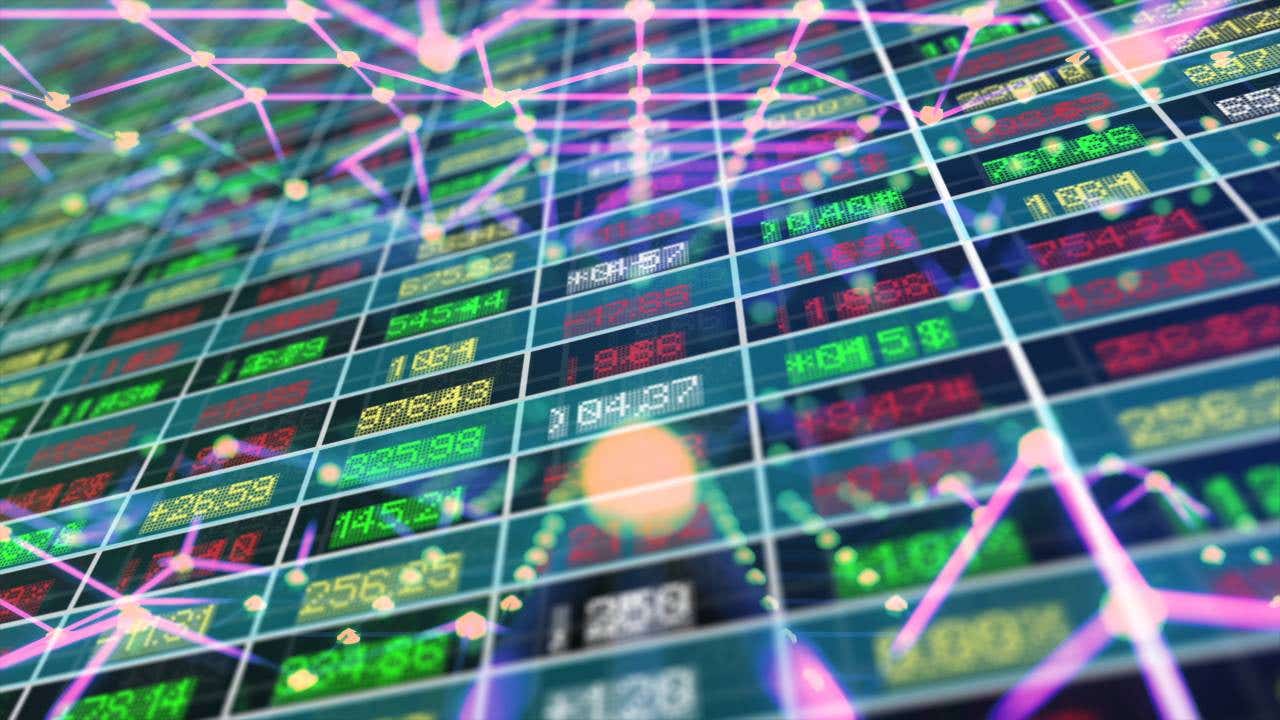What is a gamma squeeze in options trading?

A gamma squeeze is a fascinating phenomenon in options trading, showcasing how derivative markets can make stock prices soar or plummet. They have been a key factor in the run-ups in retailer GameStop and chipmaker Nvidia, helping propel those stocks to massive gains. Gamma squeezes are complex and risky events, though not that common.
Here’s everything you need to know about a gamma squeeze.
What is a gamma squeeze?
A gamma squeeze occurs when the buying pressure for options contracts triggers a rapid rise in the price of the underlying stock.
Before we dive in further, it’s important to understand a few basics about the options trading market.
Understanding options
The options market gives investors the chance to speculate on the future price movements of a stock without actually owning the shares.
Options are contracts that grant the buyer the right, but not the obligation, to buy (call options) or sell (put options) a specific stock at a predetermined price (the strike price) by a certain date (the expiration date).
On the other side of this transaction is often a market maker, a professional who facilitates options trading by providing liquidity. They’re always ready to buy and sell a specific security at its quoted price, making a profit on the bid-ask spread in the process.
Understanding a gamma squeeze
With that context in mind, a gamma squeeze is spurred by a sudden surge in buying activity for call options or selling for put options.
When a large number of call options — which represent 100 shares of the underlying stock — are purchased from a market maker, the market maker essentially becomes short the stock. The market maker has an obligation to deliver the shares if the option is exercised. If the stock price rises, this short position exposes them to potentially unlimited losses.
To hedge this risk, market makers buy the underlying stock itself to offset their short position in the call options. Ironically, this additional buying activity from market makers propels the stock price upwards — the opposite of what they want — creating a snowball effect.
As the stock price climbs, it incentivizes even more call buying, thereby perpetuating the cycle.
Options Greeks
While options generally reflect the price movements of the underlying asset, their pricing is more intricate than stock prices. Options traders utilize the “Greeks,” a set of letters representing variables that measure how different factors influence the price of an option.
Two crucial Greeks in the context of gamma squeezes are delta and gamma.
- Delta: Delta tells you how much the price of an option is expected to change in relation to a $1 movement in the price of the underlying stock. For example, a delta of 0.5 indicates that for every $1 increase in the stock price, the option price is likely to increase by $0.50.
- Gamma: Building on delta, gamma measures the rate of change in delta itself. So, it essentially tells you how quickly the option’s sensitivity to stock price changes is accelerating.
As the stock price goes up, the market maker who sold call options needs to buy more and more stock to hedge the position. In this case, delta reflects how much stock they need to buy for each dollar increase in the stock price.
Here’s where it gets interesting: Delta also indicates the likelihood of a call option expiring “in the money,” meaning the stock price is above the strike price.
So, the higher the stock price goes, the closer the call options get to expiring in the money, and delta climbs toward 1. This tells the market maker they need to buy close to 100 percent of the underlying stock to fully hedge their short call position.
Now, imagine this playing out on a massive scale with millions of shares. As the stock price rises, the market maker gets “squeezed” and must buy more and more stock to hedge their calls. The market maker’s additional buying only fuels the rally — creating a gamma squeeze.
3 ingredients of a gamma squeeze
Gamma squeezes aren’t that common, in part, because several factors need to align just right to set the phenomenon in motion.
The key ingredients of a gamma squeeze are:
- Increase in call options purchases: There needs to be a significant number of outstanding call options contracts, specifically those with short expiration dates. This can create a concentrated buying force if the stock price starts to rise.
- Rising stock price: An initial increase in the stock price is the catalyst that sets the whole process in motion. This initial rise could be due to positive news, analyst upgrades, an upcoming stock split or simply increased buying pressure.
- Market maker hedging: As the stock price climbs and delta increases for outstanding call options, market makers who sold calls are forced to buy the underlying stock to hedge their positions. This additional buying from market makers fuels the upward spiral in the stock price.
Traders who spot a gamma squeeze can then throw even more fuel on the fire by buying call options or the underlying stock, pushing the stock still higher.
Two gamma squeeze examples: GameStop and Nvidia
Perhaps the most well-known example of a gamma squeeze in recent history occurred with the GameStop (GME) meme stock craze in early 2021.
Retail investors on online forums such as Reddit heavily bought call options on the stock, anticipating a short squeeze — where investors who shorted the stock are forced to buy to cover their positions, driving the price up.
When people bought out-of-the-money options on GameStop, it forced market makers to begin hedging their position. As the stock climbed, the hedge ratio employed by market makers increased, forcing them to buy more shares of GameStop to offset their positions. The stock zoomed massively higher in just days.
More recently, some analysts have pointed to a potential gamma squeeze in Nvidia, the AI powerhouse that went from a market cap of $582.3 billion in February 2023 to more than $3 trillion by June 2024.
Nvidia became a favorite for options traders, in part because options require less money to set up a position and provide more leverage. Traders rushed to buy call options on Nvidia, anticipating its meteoric rise would continue. The growing popularity of options with shorter expiration dates is also likely contributing to Nvidia’s surge in the options market.
In response, market makers hedge their positions by buying shares of the underlying stock, kicking off a gamma squeeze feedback loop.
Still, it’s hard to say how much of Nvidia’s rise at the end of May 2024 was due to a gamma squeeze in the options market and how much is due to a general wave of excitement from investors bullish on the future of artificial intelligence. Unlike GameStop, Nvidia has the earnings and revenue to justify a rising stock price — even if the speed of that ascent is unprecedented.
Gamma squeeze vs. short squeeze
While both gamma squeezes and short squeezes can cause rapid stock price increases, one is tied to options trading while the other is tied to stock trading.
A gamma squeeze is tied to options positioning and primarily impacts market makers. When there’s a surge in call options buying for a particular stock, market makers who sold those calls are forced to buy the underlying stock to hedge their bets. This extra buying pressure can drive up the stock price.
Meanwhile, a short squeeze is all about stock positioning, and primarily involves investors and hedge funds. When a stock is heavily shorted — meaning many investors are betting on its price to decline — a sudden rise in the stock price can force these short sellers to buy back shares to cover their positions. This surge in buying from short sellers to exit their positions can further pump the stock price.
In both cases, a sharp price increase forces a key market participant to buy the stock, leading to a potential snowball effect.
Risks of a gamma squeeze for investors
For most investors, gamma squeezes are best observed, not actively traded. That’s because this market phenomenon is known for wild price swings and sudden gaps between closing and opening prices, making them difficult to navigate.
Events like social media hype such as the Reddit frenzy around GameStop or the emergence of a noted GameStop investor in May 2024 can amplify volatility and make the stock price even more unpredictable during a squeeze.
And despite a meteoric rise in share price, the party can’t last forever: While powerful, gamma squeezes are generally short-lived. So proceed with caution. Gamma squeezes are high-risk scenarios that can be difficult to navigate, even for experienced options traders who understand the volatility and potential pitfalls involved.
Bottom line
A gamma squeeze occurs when heavy call buying forces options market makers to buy more shares of the underlying stock to hedge their positions. The higher price entices more call buying, which requires further buying by market makers, creating a snowball effect.
Editorial Disclaimer: All investors are advised to conduct their own independent research into investment strategies before making an investment decision. In addition, investors are advised that past investment product performance is no guarantee of future price appreciation.
Why we ask for feedback Your feedback helps us improve our content and services. It takes less than a minute to complete.
Your responses are anonymous and will only be used for improving our website.







